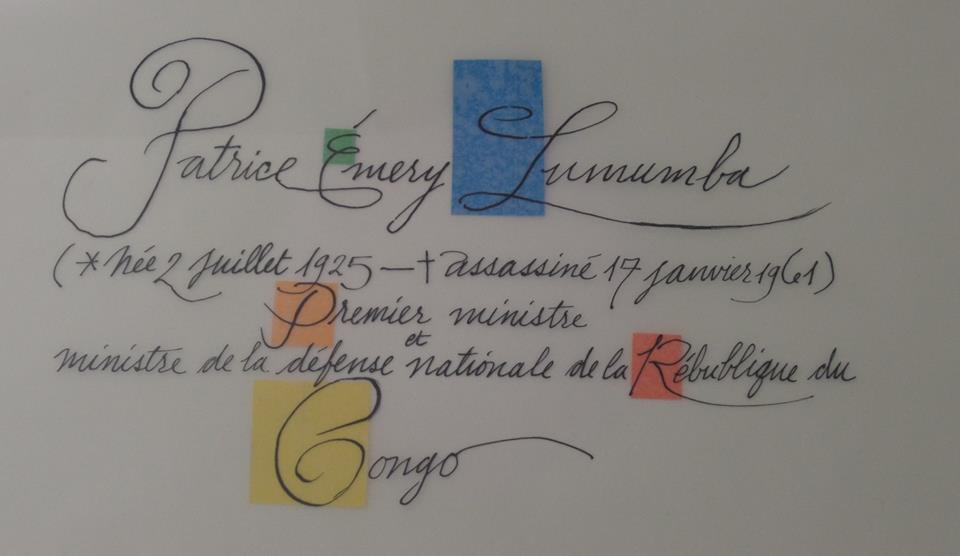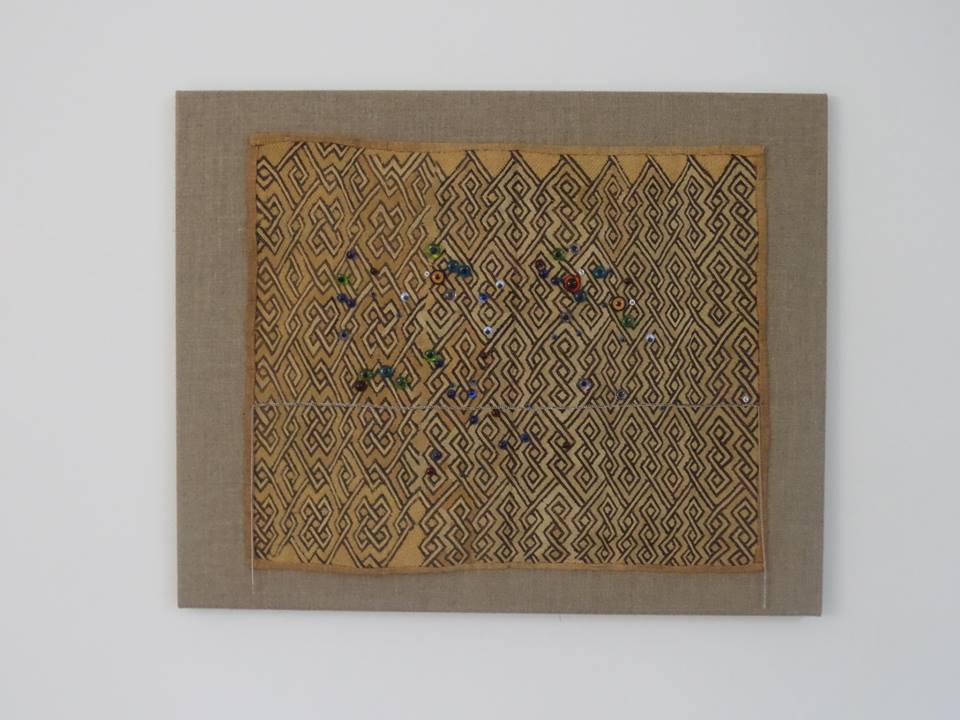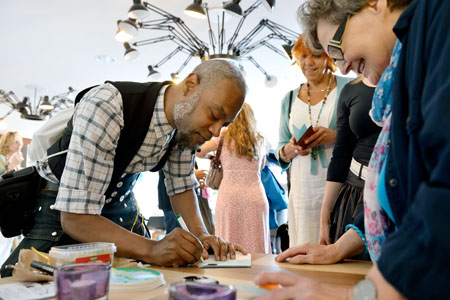
Jean-Ulrick Désert: “Belgian Soliloquy”
Platform 102
rue Antoine Dansaert 102
1000 Brussels
Until May 17, 2015.
The Constellation of Aries……..(detail), 2015.
About:
Jean Ulrick-Désert is internationally known for creating groundbreaking artworks related to specific histories, locations and topics within humanity. He works from a multimedia approach using materials such as public billboards, actions, paintings, site-specific works, video and objects that emerge from a tradition of conceptual-work engaged with social/cultural practices. Well known for his “Negerhosen 2000”, his provocative “Burqa Project” and his poetic “Goddess Projects”, Désert says his practice can be characterized as visualizing “conspicuous invisibility”.
Désert has continued throughout his career to explore the potential history plays in contemporary society.
 Negerhosen Project, 2000.
Negerhosen Project, 2000.
 Goddess Projects. from 2009 on.
Goddess Projects. from 2009 on.
For Platform 102, he has created an unique series of “constellation portraits” and text-based work conceived to provide background and context as a reflection on Belgian colonial history.
The presentation chronicles pivotal moments of destiny by combining visual and literary sources that debate pre/post-colonial identities through celestial references. This creates, in the artist’s own words, “dialogue between the analogue and the digital. Science and belief. Concrete and ephemeral. Precise and intuitive.”
This exclusive Belgian presentation expands on historical moments through three distinct works that use science, mysticism and poetic intervention to explore historical facts. The works function as a register for cultural implications from a perspective of universal phenomenon. They create new meanings by incorporating traditions, precise timeframes and testimonies that are unified by a common theme that resonates within the space.
Works in Presentation
 Léopold Louis-Philippe Marie Victor de Saxe-Cobourg….., 2015.
Léopold Louis-Philippe Marie Victor de Saxe-Cobourg….., 2015.
Désert has created an epic work for Platform 102 titled “Léopold Louis-Philippe Marie Victor de Saxe-Cobourg / Sky above Bruxelles 50°51’N / 4°21’E 9 April 1835 01:30CET “, which chronicles the formation of planets and stars at the time of King Leopold II birth.
You’ll see in the work (six panels hand-painted and with collage on black chromatic paper) the significant “orbit-lines of planets” based on the sky above Brussels that evening……Mars in red velvet, The Moon in grey velvet and Saturn in black velvet among the “stars” in silver glitter cellophane. The work offers a synthesis of Leopold’s birth intertwining the active with contemplation and facts that will forever be attached to this future King of Belgium.
The Constellation……, 2015.
In “The Constellation of Aries and its surrounding stars, Leopoldville (Kinshasa) 12:00 WAT 30 June 1960″, Désert uses traditional Kuba cloth, a brass chain and taxidermy eyes to express the return of independence to the Congolese with an emphasis on the Kuba tribe who were decimated during colonialism.
The artist sees the eyes as the spirits of the the Kuba people and uses their traditional cloth as a back drop, like stars in the sky. The chain serves as the equator which the Congo straddles. It can be related to Kuba spiritual belief of Bumba the Sky Father who came from sun, moon, stars, and planets, however, the constellation is highly etaphoric.
“The Constellation of Aries……” is from the perspective of those that have suffered under Leopold II and Belgian rule. It uses the specific facts of the constellation Aries as the starting point of post-colonialism as Leopold II constellation serves as the starting point.
 The full independence speech………, 2015.
The full independence speech………, 2015.
Opposite to the Leopold II constellation is the four panel work “Full Independence Speech (rendered as a manuscript) Delivered by the Prime Minister (Patrice Lumumba) of the New Nation of Congo on 30 June 1960″ in Désert’s own handwriting.
On Congolese Independence Day in 1960, King Baudouin arrived to make a speech praising the “genius” of Leopold II and the sacrifices that Belgium had made for the Congo, plus he gave patronising advice to the newly independent country. Lumumba responded with an impromptu denunciation of Belgian colonial rule that is the basis of Désert’s work. In part, Lumumba stated:
“Our wounds are too fresh and too smarting (for us to ever forget the colonial regime of the past 80 years). We have known ironies, insults, and blows which we had to undergo morning, noon and night because we were Negroes. We have seen our lands spoiled in the name of laws which only recognised the right of the strongest. We have known laws which differed according to whether it dealt with a black man or a white.”
In addition (aesthetically) the attention to detail with the placement of colour blocks on capital letters throughout form their own “constellation of capitals” . The colour blocks bring reflection to the work and to the speech, a speech that is still considered one of the most powerful ever. What is most important about the work is that it serves as a reminder that concepts of freedom differ between oppressors and the oppressed.
 Installation View.
Installation View.
Déserts installation which the artists has titled “Belgian Soliloquy ” represents the subtler aspects of art making which are becoming harder to find in contemporary art, work that is governed by a commitment to ideas, rebellion, aesthetics, and an introspective nature that raises questions and seeks answers.
Désert is not explicitly commenting on Belgium’s colonial past, but uses comparisons in order to better understand a timeline of events through their transformations.
By drawing from historical sources and by deconstructing scenarios around concepts of political power and freedom Désert’s installation creates a way of engaging with traumatic historical material to better understand the complexities which help developed contemporary Belgium.


